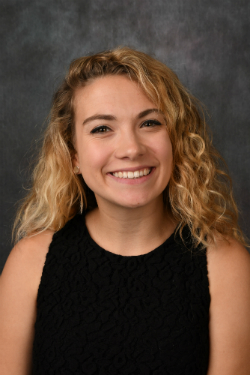
In the latest on-screen post-apocalyptic film, silence means survival. People cannot walk on solid ground, children cannot play with battery-powered toys and families cannot eat with plates and silverware. “It’s too loud,” Evelyn Abbott (Emily Blunt) would say. This is the world of “A Quiet Place” (2018).
Directed by John Krasinski, the thriller stars Krasinski, Blunt (“The Girl on the Train”), and their on-screen children Millicent Simmonds (“Wonderstruck”) and Noah Jupe (“Suburbicon”). The film premiered in March at the South By Southwest (SXSW) film festival and immediately caught moviegoers’ attention. The original screenplay written by Bryan Woods, Scott Beck and Krasinski is an allegory for parenthood anxieties.
Lee Abbott (Krasinski) and his family are stuck fending for themselves. They hide from hyper-sensitive creatures that lurk in the shadows, waiting for someone to make the wrong step and make a sound. The Abbotts survive day-to-day through a system that masks their sound, until they slip up and and must outrun the consequences.
Unlike most thrillers and horror films of late, “A Quiet Place” is a refreshing psychological thriller. With smart jumpscares, the film taunts the audience with silence followed by a jarring noise that invites the monsters to hunt. It’s a film filled with deadly alien creatures, but it is ultimately about the anxiety around protecting one’s children.
The horror genre, scholars like Thomas Schatz argue, functions as a way to indirectly deal with repressed anxieties in society. In this case, Krasinski’s real-life worry was raising his second newborn child in 2016. While Krasinski was influenced by films like “Alien” (1979) and “Jaws” (1975), he was also inspired by his experiences raising two young children with real-life wife Blunt. Whether you are a parent or not, you will take on the stress that the Abbotts hold during the entire 95 minutes.
Each of the characters share this unease in “A Quiet Place” and a constant fear is relayed in each actor’s performance. Because they can’t audibly speak and daughter Regan (Simmonds) is deaf, the Abbotts communicate through sign language and eye contact. Sign language is not an alternative mode of communicating--it is essential for their survival.
The drastic changes in dialogue (often common in Hollywood films) and changes in sound impact the framing in “A Quiet Place,” which emphasizes how much sound is around us and how often many of us rely on it. The quietness creates a void for the audience, which is filled with fear.
These feats have not gone unnoticed by critics and moviegoers alike. “A Quiet Place” has brought in over $150 million worldwide thus far, breaking the box-office record for an original horror film. As it heads into its third box-office weekend, “A Quiet Place” will likely bring more tension into theaters as moviegoers put down their popcorn and sit in silence with the Abbotts. “A Quiet Place” is now playing in theaters everywhere.
